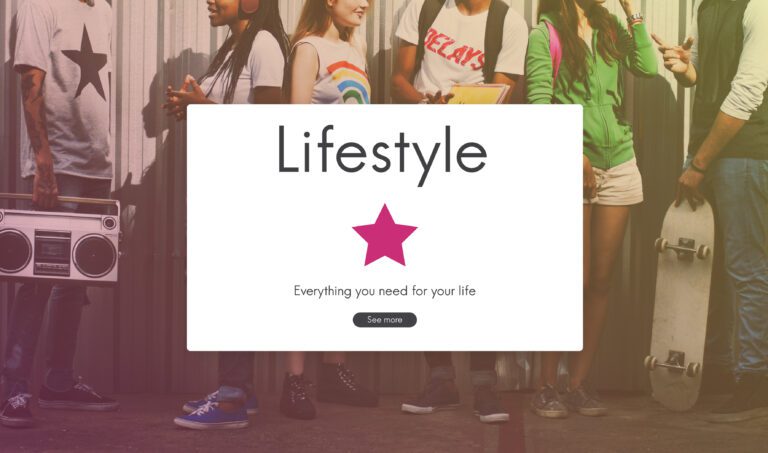Popups and Compliance: GDPR, CCPA, and Consent-Driven Marketing

I hope you enjoy this blog post. If you want Hello Bar to grow your leads, click here.
Author:
Mansi
Published
July 16, 2025

Table of Contents
If you manage a website, run an online shop, or handle any kind of digital marketing, you already know that privacy laws are no joke. What once felt like a background technicality has become front and center for anyone using popups—especially those that collect personal information. Terms like GDPR, CCPA, “consent management,” and “data subject rights” show up everywhere. But what does this actually mean for popups and compliance in real-world marketing?
Let’s break it down, step by step. We’ll talk about what these rules really require, what happens if you ignore them, and most importantly, how you can keep your popups driving results without falling foul of the law (or losing your visitors’ trust).
Why Popups and Compliance Matter—More Than Ever
Popups have always been a go-to marketing tool. They collect emails, promote sales, run surveys, and sometimes just say hello. But every popup that collects data is now in the spotlight, thanks to growing privacy concerns and stricter regulations around the world.
If your popups aren’t compliant, you’re not just risking a slap on the wrist. You could face real fines, lawsuits, or angry users who will never trust your brand again. Popups and compliance go hand in hand now—and there’s no shortcut around it.
The tricky part? Regulations like GDPR and CCPA aren’t always straightforward, and what counts as “compliance” can vary by country, visitor location, and even the type of data you collect. This isn’t about scaring anyone—it’s about understanding how to build trust and protect your business while still getting the marketing results you need.
What Are GDPR and CCPA? (The Human Explanation)
Let’s skip the legal jargon for a moment. Here’s what you actually need to know:
- GDPR is a European law that affects anyone who collects, stores, or processes data about people living in the EU. It’s strict, detailed, and applies even if your business is outside Europe.
- CCPA is a California law with similar goals—protecting people’s data and giving them more control over what companies collect, store, and sell.
Both laws boil down to the same core ideas:
- People need to know what data you’re collecting and why.
- They have the right to say no—or take back their consent at any time.
- You can’t use data for things you didn’t clearly explain up front.
- People must be able to request access to their data or ask you to delete it.
If your popups collect emails, run surveys, track behavior, or use cookies to personalize offers, popups and compliance aren’t optional—they’re required.
What Does “Consent” Actually Mean for Popups?
Consent isn’t just a checkbox anymore. Under GDPR and CCPA, consent means a visitor has actively agreed (not just failed to opt out). That means:
- No pre-ticked boxes.
- No “by using this site, you agree…” in tiny print.
- No collecting information before a visitor has agreed.
For popups and compliance, this means you need to be upfront, clear, and give users a real choice. If you’re using cookies, tracking scripts, or collecting emails for marketing, you need clear consent—ideally through a visible, simple popup that lays it out in plain language.
Popups and Compliance: Common Scenarios
Let’s look at a few everyday scenarios:
1. Email Signup Popups
If you ask for an email address in exchange for a discount, your popup needs a line that explains what you’ll do with that email. Will you send marketing emails? Share with partners? You need to spell it out. The visitor must actively agree—usually by checking a box or clicking a button that clearly states consent.
2. Cookie Consent Popups
If your site uses cookies that aren’t strictly necessary (think tracking, analytics, advertising), you need a cookie consent popup. It has to explain what’s being tracked and give users the option to accept, reject, or customize their choices. Popups and compliance here mean more than a basic “We use cookies” banner—you need real options.
3. Survey or Feedback Popups
Collecting opinions is fine, but if you’re storing any personal data (like email or IP address), you need to explain why and how it will be used. Again, the user must agree before submitting.
How to Make Your Popups Compliant—Without Killing Conversions

This is the million-dollar question: how do you make popups and compliance work for your business, and for your visitors?
Here’s a grounded approach:
1. Keep Language Simple and Direct
Skip the legalese. Tell users what you’re collecting, why, and what you’ll do with it—in plain English. For example:
“Sign up to get our newsletter. We’ll send you updates and promotions, but never share your information with third parties.”
2. Make Consent Obvious and Optional
If you’re collecting data, let the user check a box or click a clear “I agree” button. Don’t hide consent behind links or blend it into other actions. The best popups and compliance strategies use visible checkboxes and a clear statement.
3. Give Real Choices—Not Fake Opt-Outs
With cookie consent popups, offer clear “Accept” and “Reject” options. If you’re using tracking for advertising or analytics, let people opt out. Don’t make the “decline” button hard to find.
4. Only Ask for What You Need
This isn’t just about compliance—it’s also good UX. If you only need an email, don’t ask for a name, phone number, or company size. Less data means fewer risks (and fewer abandoned forms).
5. Make It Easy to Withdraw Consent
Let users unsubscribe or change preferences at any time. Every email should include an unsubscribe link. If someone asks for their data or requests deletion, be ready to help—quickly.
6. Document Everything
Keep a record of how your popups work, what data you collect, and what you do with it. If someone questions your popups and compliance, you’ll have answers (and proof).
What Happens If You Ignore Popups and Compliance?
Here’s the truth: many small businesses hope no one will notice, or think these rules only apply to the “big guys.” That’s risky. Both GDPR and CCPA have real teeth. Fines for non-compliance can range from a warning (if you fix things quickly) to hundreds of thousands—or even millions—of dollars for repeat offenders.
But it’s not just about money. If a user feels their privacy isn’t respected, you lose trust. One bad review on social media, or a story about how your popups “tricked” someone into giving up their data, can damage your reputation far more than any fine.
The flip side? Respecting popups and compliance actually builds trust. When visitors see that you’re upfront about how their data is used, they’re more likely to sign up, not less.
Popups and Compliance: A Checklist You Can Actually Use
Here’s a practical checklist to keep your popups and compliance on the right side of the law:
- Do you explain clearly what data you’re collecting and why?
- Do you ask for consent with a visible, unticked checkbox or button?
- Can visitors easily refuse or withdraw consent?
- Do you avoid collecting more data than you need?
- Are your cookie popups customizable, with real opt-out options?
- Do you include an unsubscribe or data removal link in your emails?
- Do you keep a record of when and how consent was given?
If you can check off every point, you’re ahead of most businesses—and you’ll sleep easier knowing your popups and compliance are covered.
Real-World Tips From the Trenches
I’ve worked with clients who were terrified of adding “friction” to their popups. They worried that even a single checkbox would kill signups. Here’s what actually happened:
- Conversions dipped slightly at first, but soon stabilized. The people who did sign up were more engaged, and there were fewer complaints or spam reports.
- Cookie banners that offered clear choices (not just a single “Accept” button) got more opt-ins than expected. People appreciated the honesty.
- Explaining the “why” behind the data (“We use your feedback to improve our products, never to sell your information”) made a real difference. Users were more likely to participate.
Bottom line: popups and compliance done right might reduce raw numbers a bit, but the quality of your audience goes up. And you keep your reputation and revenue safe.
Tools That Make Popups and Compliance Easier
You don’t have to build all this from scratch. Most modern popup and email tools now include compliance features. Look for:
- Built-in consent checkboxes for forms
- Customizable cookie consent banners
- Options to store consent logs
- Integrations with email marketing tools for unsubscribe management
- Templates that explain privacy in clear language
Some of the most popular options include OneTrust, Cookiebot, Mailchimp, ConvertBox, and Privy. Whatever tool you use, always test your popups on both desktop and mobile, and read the settings carefully.
Also read our guide on What is GDPR Compliance + Checklist Your Company Needs to Follow
How Consent-Driven Marketing Builds Real Relationships
The shift to consent-driven marketing isn’t just about avoiding lawsuits. It’s about changing how you approach your audience. Instead of tricking people into giving up their information, you invite them to participate—on their terms.
Popups and compliance, when handled well, signal that your brand is worth trusting. You’re not just chasing the biggest list; you’re building a community of people who want to hear from you. Over time, this translates into higher open rates, better engagement, and fewer headaches for your team.
It’s tempting to cut corners, but the brands that win in the long run are the ones that put respect and transparency at the heart of everything they do—including every popup.
Conclusion
Popups and compliance may seem complicated at first, but it’s really about treating your visitors the way you’d want to be treated. Be clear, be honest, and give people real choices about their data. You’ll not only stay on the right side of the law—you’ll build trust that lasts, and that’s worth more than any quick win.
If you need help making your popups and compliance setup more transparent, or you want to audit your current approach, now’s the time to do it. Your business, your users, and your peace of mind will thank you.






